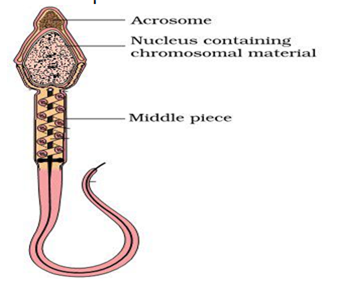 Short Answer Type
Short Answer TypeHow is 'oogenesis' markedly different from 'spermatogenesis' with respect to the growth till puberty in the humans?
Draw a sectional view of human ovary and label the different follicular stages, ovum and Corpus luteum.
Mention any three characteristics of Neanderthal man that lived in near east and central Asia.
 Long Answer Type
Long Answer Type(a) Name the technology that has helped scientists to propagate on a large scale the desired crops in a short duration. List the steps carried out to propagate the crops by the said technique.
(b) How are somatic hybrids obtained?
 Short Answer Type
Short Answer Type Long Answer Type
Long Answer TypeDuring the reproductive cycle of a human female, when, where and how does a placenta develop? What is the function of placenta during pregnancy and embryo development?
 Short Answer Type
Short Answer TypeDraw a diagram of the microscopic structure of human sperm. Label the following parts in it and write their functions.
(a) Acrosome
(b) Nucleus
(c) Middle piece
Microscopic structure of human sperm
Function of Acrosome -
It contains enzymes that help the sperm to enter and to fertilise the ovum.
Function of Nucleus -
It stores the genetic information. It carries 23 chromosomes, out of which one is sex chromosome (either X or Y). Thus, it is responsible for determining the sex of the individual.
Function of Middle piece -
The middle piece contains several mitochondria, which produce energy for the movement of the tail and motility of the sperm.
 Long Answer Type
Long Answer Type(a) Draw a diagrammatic sectional view of the female reproductive system of human and label the parts:
(i) where the secondary oocytes develop
(ii) which helps in collection of ovum after ovulation
(iii) where fertilization occurs
(iv) where implantation of embryo occurs.
(b) Explain the role of pituitary and the ovarian hormones in menstrual cycle in human females. Short Answer Type
Short Answer Type